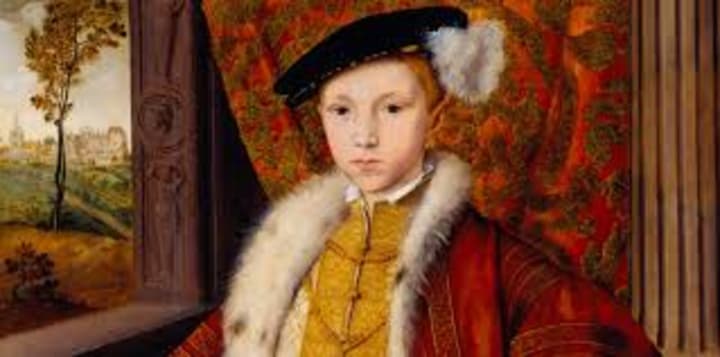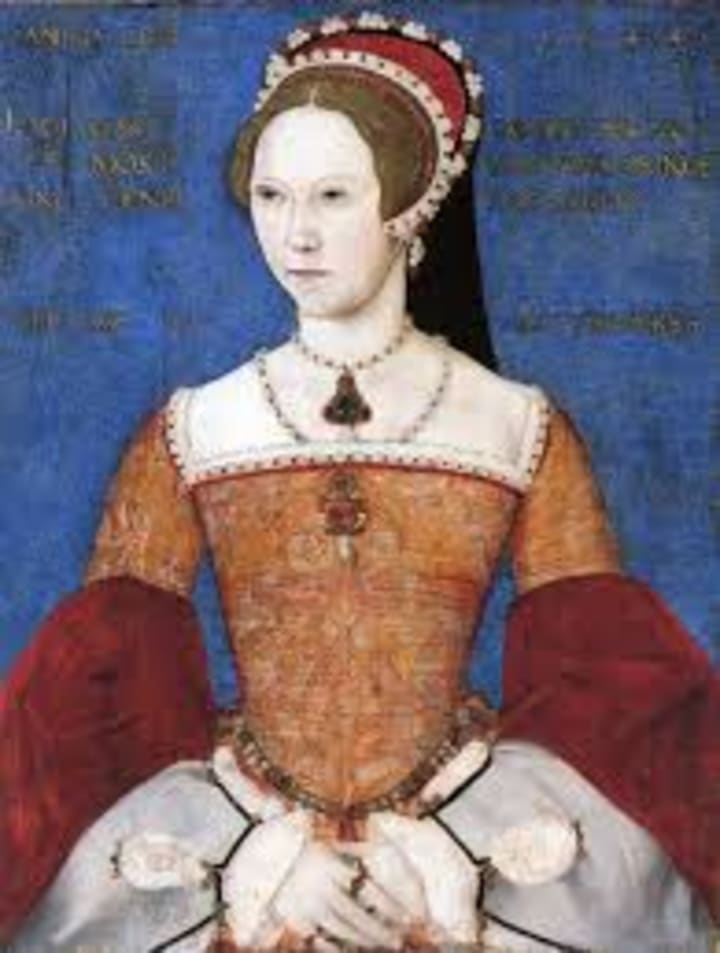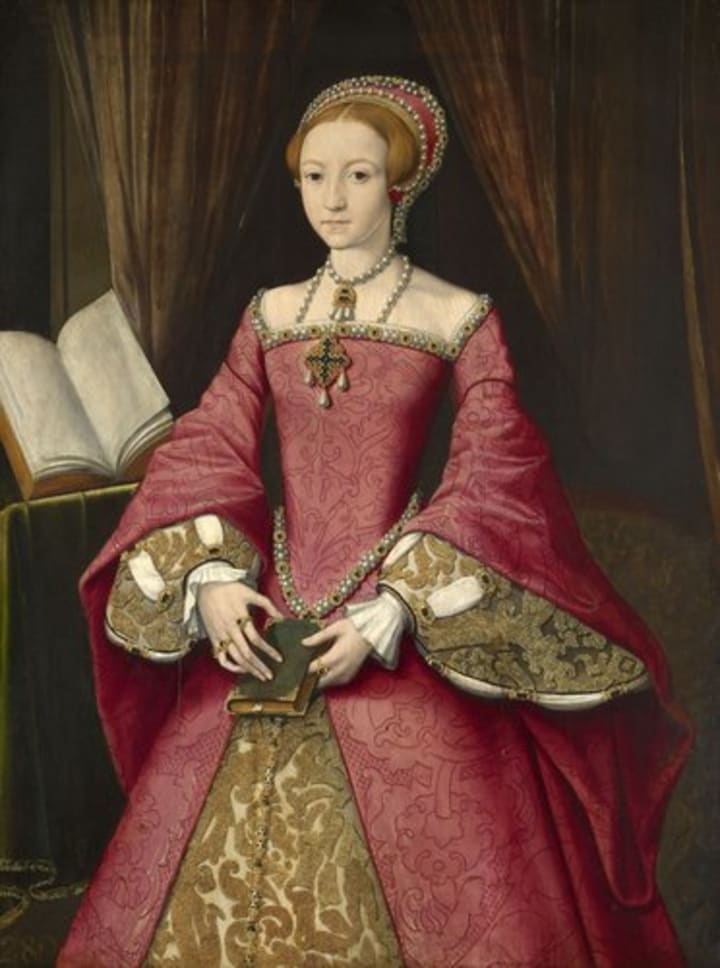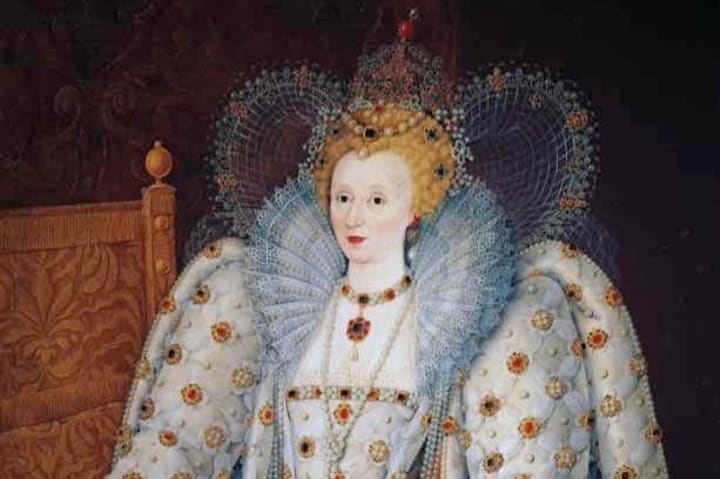THE TUDOR ERA
The Kings and Queens

The Tudor Era is the period between 1485 and 1603 in England and Wales, and includes the Elizabethan period during the reign of Elizabeth I until 1603. This Era coincides with the dynasty of the House of Tudor in England whose first monarch was Henry VII. The historian John Guy argues that “England was economically healthier, more expansive, and more optimistic under the Tudors” than at any time in a thousand years.
Following the Black Death and the agricultural depression of the late 15th Century, the population began to increase. It was less than two million in 1450, and about four million in 1600. The growing population stimulated economic growth, accelerated the commercialisation of agriculture, increased the population and export of wool, encouraged trade, and promoted the growth of London.
The high wages and abundance of available land seen in the late 15th Century and early 16th Century were replaced with low wages and a land shortage. Various inflationary pressures, due to a rising population, set the stage for social upheaval with the gap between the rich and poor widening. This was a period of change for the majority of the rural population, with manorial lands beginning the process of enclosure of village lands that previously had been opened to everyone.
The “Reformation” transformed English religion during the Tudor Era. The four monarchs, Henry VIII, Edward VI, Mary I, Elizabeth I, had entirely different approaches, with Henry replacing the pope as the Head of the Church of England but maintaining Catholic doctrines, Edward imposing a very strict Protestantism, Mary attempting to reinstate Catholicism, and Elizabeth arriving at a compromising position that defined the not-quite-Protestant Church of England. It began with the demand of Henry VIII for an annulment of his marriage that Pope Clement VII refused to grant.
HENRY VII (28th January 1457 – 21st April 1509) was the King of England and Lord of Wales from his seizure of the crown on 22nd August 1485 to his death on 21st April 1509. He was the first monarch of the House of Tudor. Henry was born at Pembroke Castle on 28th January 1457, to Margaret Beaufort, Countess of Richmond. His father, Edmund Tudor, 1st Earl of Richmond, died three months before his birth. Henry’s main claim to the English throne comes from his mother through the House of Beaufort. Lady Beaufort (Henry’s mother) was a great-granddaughter of John of Gaunt, fourth son of Edward III. By 1483, Henry was the senior male Lancastrian claimant remaining after the deaths in battle, by murder or execution of Henry VI, his son Edward of Westminster, Prince of Wales, and the other Beaufort line of descent through Lady Margaret’s uncles, the 2nd Duke of Somerset.
The future King Henry VII had been born into the civil strife of the Wars of the Roses, Edmond Tudors posthumous son, his mother had been only 13 at the time of his birth. It was reported to have been a difficult confinement. Prior to Bosworth, Henry had spent much of his life in exile. Although his mother went through 3 husbands, Henry was Margaret Beaufort’s only child. After the Battle of Bosworth, Henry announced that he had come to the throne by inheritance.
Elizabeth of York, the eldest daughter of Edward IV, whom he had vowed to marry, was escorted to London. They married after Henry’s Coronation, showing to all that he ruled in his own right. He hoped that this marriage would satisfy some of the less extreme Yorkists and lead to their acceptance of the newly established Tudor dynasty. Elizabeth was tall, fair haired, and attractive and gentle in nature. The marriage took place on 18th January 1486 at Westminster Abbey. Nine months later, the new Queen was delivered of a son. He was given the symbolic name of “Arthur”, in honour of the legendary Dark Age Celtic King Arthur.
“The Tudor Rose” was born, the emblem of a rose both red and white was adopted as one of the King’s badges, meant to symbolize the union of the Houses of Lancaster and York. The Queen’s household was ruled by Lady Margaret Beaufort (Henry’s mother). The Queen’s own mother, the meddlesome Elizabeth Woodville, suspected of involvement in Yorkist plot, was shut up in a nunnery and stripped of all her beginnings.
Henry and Elizabeth went on to have a large family, four of whom survived to adult-hood. The birth of Arthur was followed by a daughter, Margaret, (destined to be the Queen of Scots) in 1489, then came Henry (the future Henry VIII) on whom his father bestowed the title Duke of York. A further daughter, Mary, was born, and she was briefly the Queen of France.
In the spring of 1486, the new King went on progress through his realm, visiting (among other places) York. Outwardly at least, he seems to have been well received. Arthur married Catherine of Aragon (an arranged marriage), the younger brother Henry giving the bride away. Their father Henry, usually so frugal with money, spent lavishly on the celebrations. The newly-wed couple were sent to Ludlow, traditionally the seat of the Prince of Wales, but during the spring, an epidemic of the “Sweating sickness” was rife in the area and the couple contracted it. Catherine recovered, Arthur died. Henry and Elizabeth were devastated at Arthur’s death and, now with only the one son living, tried for another son. Elizabeth became pregnant but her health was unsteady all through the pregnancy. She died nine days after giving birth in 1503. The child only lived one day. Henry VII gave his wife a magnificent funeral, and Elizabeth is buried at Westminster Abbey.
Margaret Tudor (the King’s eldest daughter) was married to James IV, King of Scots, to seal an alliance with Scotland. It was through this marriage that the Scottish Stuart dynasty were eventually to inherit England’s throne.
After the death of his wife, Henry VII became somewhat a reclusive. He died of tuberculosis in 1509 and was buried at Westminster Abbey beside his beloved wife, Elizabeth of York.
HENRY VIII (28th June 1491 – 28th January 1547) was King of England from 1509 until his death in 1547. Henry was the second Tudor Monarch, succeeding his father, Henry VII. His contemporaries considered Henry VIII in his prime to be an attractive, educated and accomplished King. He has been described as “one of the most charismatic rulers to sit on the English throne.” He was an author and composer. As he aged, Henry became severely obese and his health suffered, contributing to his death in 1547. He is frequently characterized in his later life as a lustful, egotistical, harsh and insecure King. He was succeeded by his son Edward VI, the son by his third marriage, to Jane Seymour.
Henry Tudor was born at the Palace of Placentia in Greenwich, Kent, the third child and second son of Henry VII and Elizabeth of York. Henry had originally been intended for a career in the Church. Henry was provided with an excellent education, becoming fluent in French, Latin and Spanish. After the death of his elder brother, Arthur< Henry was betrothed to his brother’s widow, Catherine of Aragon. The death of his mother after was said to have greatly affected the young Prince. Concerns were raised at his father’s treatment of his only remaining living son. “This great boy,” as Henry VII called him, was kept in seclusion in his apartments, which could be reached only through the King’s. The young Prince was allowed only the company of his tutors and guards.
King Henry VIII came to the throne on the death of his father in April 1509, inheriting a kingdom that was stable and a full treasury. Henry’s wedding to Catherine of Aragon took place at the friar’s church in Greenwich on 11th June 1509. On 23rd June 1509, Henry led his 23 year old new bride, Catherine, from the Tower of London to Westminster Abbey for their Coronation, which took place the following day. Two days after his Coronation, Henry arranged for the arrest of his father’s two most unpopular ministers, Sir Richard Empson and Edmund Dudley. They were charged with high treason and executed in 1510.
Henry VIII was tall at 6ft 3in, and well-built. He had his Plantagenet mother’s reddish auburn hair, with fair skin and was considered very good-looking by the standards of the day. The Venetian Ambassador, Giustinian, described Henry as “the handsomest potentate I ever set eyes on, above the usual height, with an extremely fine calf to his leg, his complexion very fair and bright with auburn hair combed straight and short in the French fashion, and a round face so very beautiful, his throat being rather long and thick.” Henry was intelligent, extrovert and confident, like most of the Tudors, he was well seen in theology. In common with the ruthless Yorkist strain, he could be cruel and self-willed. Henry was recognizably like his paternal grandfather, Edward IV, a gormandiser, with an appetite for women, capricious and cruel, yet always able to command popularity. In his youth, Henry excelled at sports, and enjoyed jousting, hunting and real tennis. Henry was also an accomplished musician, his best known piece of music is “Pastime with Good Company,” otherwise known as “The Kynges Ballade.”
Thomas, Cardinal Wolsey, was the son of an Ipswich butcher and he rose rapidly in Henry VIII’s service. Able, ambitious and hardworking, Cardinal Wolsey managed the day-to-day running of the kingdom. In 1520, Henry met the French King, Francis I, and displayed his wealth and magnificence at the Field of the Cloth of Gold.
In the early years, the marriage was a happy and stable marriage. Queen Catherine gave birth to a son, named Henry, on 1st January 1511. In tournaments celebrating the event, the extrovert king competed as “Sir Loyal Heart,” but tragically, the child died just a few weeks later. Catherine was to experience many stillbirths and miscarriages before giving birth to the only surviving child, a daughter, Mary, born in 1516. Henry doted on the child but desperately wanted a male heir, without which, he felt England would fall back into the anarchy of the Wars of the Roses.
Even though his marriage with Catherine started off a happy one, Henry still took mistresses. One was Elizabeth “Bessie” Blount, who gave birth to Henry’s illegitimate son, Henry Fitzroy. Henry acknowledged this boy was his son. In 1522, a marriage was arranged for Bessie Blount with Gilbert Tailboys, 1st Baron Tailboys of Kyme.
In 1527, Henry became infatuated with Anne Boleyn. Anne had large, lustrous eyes and raven hair, combined with a stylish way of dressing and enchanting French ways acquired during her stay at the court of Francis I. Henry had grown tired of Mary (Anne’s sister), but Anne was ambitious and refused to go the way of her sister and become a mistress, only to be “cast off.” Anne held out for marriage. Henry now believed his marriage to Catherine was cursed, being the widow of his late brother. Anne, now determined to be Queen, led Henry on and Henry resolved to divorce Catherine. The Pope would not grant the divorce so Henry set himself up as the head of the Church of England. The “King’s Great Matter” dragged on for years. Anne finally gave in and became pregnant, and the king’s marriage was declared null and void. Henry quickly married Anne, determined that the child be born in wedlock and legitimate --- and sure that it was a son. Anne gave birth to a daughter, Elizabeth, in 1533. Henry was not pleased. Anne miscarried of a boy in 1536, which sealed her fate.
Henry was now in love with Jane Seymour, a lady in waiting to Anne Boleyn. Jane was the daughter of a Wiltshire knight, a prim, quiet and subservient lady, qualities which attracted Henry, as they were the opposite of his loud, argumentative and strong-willed wife. Anne was arrested and tried for treason and beheaded in the Tower in1536. Now Henry could marry Jane. Jane gave birth to a son, Edward, but the birth was extremely difficult, lasting two nights and three days. Jane died a few days after the birth and was buried at St. George’s Chapel, Windsor. Henry genuinely mourned Jane and wore black for three months.
A fourth marriage was “arranged” for Henry to marry Anne of Cleves. All the report “pictured” her as a beautiful lady but when Henry met her, he was alarmed by what he saw and became reluctant to go through with the marriage. Henry married Anne of Cleves but could not consummate it. The marriage was annulled and Anne became the King’s “Good Sister.”
Henry now married the very young Catherine Howard. He doted on her, feeling young and lustful again. Catherine, married to an obese and middle aged man, foolishly strayed. The King was informed and Catherine arrested. The teenager was tried for treason was beheaded in 1542.
Henry now married for the sixth and last time. A more sensible marriage to Catherine Parr. Catherine was an attractive and intelligent woman, already a widow from two marriages but she had no children of her own and now past having any. She took a lively interest in Henry’s children and their education, bringing them to court and trying to create a stable family life. King Henry was now aging fast and his health failing. An ulcer on his leg was extremely painful and Henry had become vastly overweight.
Henry died at the age of 55, his last days bedridden, in 1547. King Henry VIII was buried at St. George’s Chapel, Windsor, next to his best loved Queen, Jane Seymour.

EDWARD VI (12th October 1537 – 6th July 1553) was the King of England and Ireland from 28th January 1547 until his death. He was crowned on 20th February at the age of nine. Edward was the only surviving son of Henry VIII and Jane Seymour, and the first English monarch to be raised as a Protestant.
Despite the occasional illness and poor eyesight, Edward enjoyed good health and was described as a tall and merry child. He was initially placed in the care of Margaret Bryan, and was appointed his first tutor at the age of six. Edward grew fond of his step-mother Catherine Parr, who did her best to have a stable family home for all of the King’s children.
The future King Edward VI was a precocious and highly intelligent child, he was sparely built, but in most of his portraits, he adopts the same stance of his father. The young Prince had the red hair of the Tudors and had one shoulder higher than the other, possibly a result of his difficult delivery. Edward became proficient in Latin, Greek and French. Like all from the House of Tudor, he was fond of music and played the lute.
Edward became King of England at nine years old in 1547. The young Prince was very distressed to hear of his father’s death and Edward and his step-sister, Elizabeth, clung to each other, weeping, when they heard the news. Edward’s Coronation took place on 19th February 1547, which was performed by Archbishop Cranmer. The lavish ceremonials were reduced to only seven hours, due to the new King’s young age.
Henry VIII’s will had decreed the kingdom was to be in the control of a Council of Regency during his son’s minority. King Edward’s ambitious maternal uncle, Edward Seymour, however, gained control. He was the Earl of Hertford and was made Lord Protector and later Duke of Somerset. Like the new young King, Seymour was an ardent Protestant. The use of English was enforced in church services by the introduction of the Book of Common Prayer. The young King was a bigoted Protestant who was intensely interested in theology. Edward VI complained that his uncle kept him short of money. His other uncle, Thomas Seymour, married Catherine Parr (Edward’s step-mother) and plotted to gain power with his young nephew. Thomas was sent to the block on a charge of treason. Edward Seymour followed his brother to the block, the Duke of Northumberland taking over his position in 1549.
The highly religious Edward VI strongly disapproved of his elder step-sister Mary’s ardent Catholicism. Mary had to answer many times about her devout practise of the Catholic faith, telling her step-brother, the King, that she would sooner he took away her life than her religion. Edward replied that he “required no such sacrifice.” Even though Mary and her household were deprived of the mass, they defiantly continued to practice it in secret.
King Edward VI fell ill in April 1552, of a combination of measles and smallpox. Later in the year, Edward began to exhibit signs of tuberculosis (or “consumption” as it was called at the time). By June, it was obvious that the young King was dying. Edward was influenced to disinherit both of his step-sisters in favour of his cousin the Lady Jane Grey.
On July 6th 1553, during the close atmosphere of a violent thunderstorm, Edward VI died in agony, crying out “I am faint, Lord, have mercy upon me, take my spirit.” The young King was buried in the Henry VII Chapel at Westminster Abbey.

MARY I (18th February 1516 – 17th November 1558), also known as Mary Tudor, was the Queen of England and Ireland from July 1553 until her death. The executions that marked her pursuit of the restoration of Roman Catholicism in England and Ireland led to her denunciation as “Bloody Mary” by her Protestant opponents.
Mary was the only living child of Henry VIII and Catherine of Aragon. She grew to be a small, slight woman with auburn hair, proud of her Spanish blood and fond of music. The young Princess had very poor eyesight, being extremely short sighted and suffered poor health, being ill with headaches and sinus conditions. Margaret, Countess of Salisbury (the last of the Plantagenet’s), was appointed as her governess. Catherine of Aragon doted on her only child, even as her father, Henry VIII, loved to show her off at court. When it became clear that Catherine would not produce a son, Mary was sent to complete her education at Ludlow as the Princess of Wales and heiress to the throne.
Anne Boleyn came on the scene and Mary’s life changed. At seventeen, her parents divorced and Mary was humiliated by being declared a “bastard” by her father. She was forbidden to see her mother. The adolescent Princess suffered emotionally and was to bear the scars for the rest of her life. Mary was removed from the succession and relegated to a lower position in the household of her new step-sister, Elizabeth, Henry’s daughter by Anne Boleyn. In 1536, Catherine of Aragon died and Mary, still grieving, was forced by Henry VIII to sign a submission undermining everything she believed in. To gain her father’s acceptance, Mary had to deny that her parents’ marriage had been legal and to acknowledge her own bastardy. This “forced” betrayal of the mother she loved affected the young Princess and she never forgave herself.
After Anne Boleyn was executed for treason, Mary was treated a little more kindly by her father and new step-mother, Jane Seymour, who was sympathetic towards Mary. Mary herself showed no hatred towards her new step-sister Elizabeth (Anne Boleyn’s daughter) but was affectionate towards the now motherless little girl.
Mary suffered much for her Catholic faith, which was at the very heart of her life. Her step-brother, Edward VI, tried to bully her into abandoning her faith. However, at this time Mary found support from her cousin (on her mother’s side) Charles V of Spain. When Edward VI died, the whole nation was behind Mary who triumphed over all past adversities, and Mary entered London as Queen on 3rd August 1553.
As a fanatical Catholic, Mary was intent on restoring the country back to “the old religion.” Her choice of husband, her Catholic cousin Philip II of Spain (who was the son of Charles V) was extremely unpopular. The English national pride was not prepared to accept a Spanish King.
Philip arrived in England and the marriage was celebrated in July 1554. Mary, who had known little affection since her mother’s death, fell in love at the age of 38. Philip did not reciprocate her affection. Mary believed she was pregnant and was humiliated when the child did not arrive, she had made a mistake. Philip left England, leaving Mary deserted.
Mary put her energy into her faith and re-enacted the statute of “de heretico comburendo” in 1555, which basically restored the power to burn heretics. The persecution and burnings of Protestants made Mary execrated by most Englishmen. Philip briefly returned to England and, again, Mary believed she was “with child.” The child was a tumour. Deserted by her husband, Mary died on 17th November 1558, of either uterine or ovarian cancer.

ELIZABETH I (17th September 1533 – 24th March 1603) was Queen of England and Ireland from 17th November 1558 until her death. Sometimes called the “Virgin Queen”, “Gloriana” or “Good Queen Bess,” Elizabeth was the last of the five monarchs of the House of Tudor.
One of England’s greatest sovereigns, Elizabeth was born at Greenwich in 1533, the only living child of Henry VIII and (his second wife) Anne Boleyn. Even though Henry VIII was hoping for a son, he still gave his daughter a magnificent christening and Elizabeth was named after her grandmothers, Elizabeth of York and Elizabeth Howard.
This young Princess grew up in the school of adversity and early on had to endure “the slings and arrows of outrageous fortune.” The experiences of her appalling childhood were to breed in her political skills, cunning and circumspection. When Elizabeth was 3 years old, her mother was executed for treason and the little Princess proclaimed a bastard. Elizabeth was an astute, prematurely wary and intelligent child, with the red hair of the Tudors coupled with her mother’s large dark eyes. She proved an excellent student in languages and was fond of music. Elizabeth became fluent in Latin, Greek, French and Italian and experienced a measure of family life and security under her last step-mother, Catherine Parr, who recognized and encouraged her step-daughter’s ability in languages and the pair grew close.
When her father died and her step-brother, Edward VI, took the throne, Elizabeth remained with Catherine, who married Thomas Seymour. Seymour abused his position as Elizabeth’s step-father, engaging in “romps” with her, tickling her and jumping on her bed in the early morning. Catherine died in childbirth and Seymour was executed for treason.
During her step-sister’s reign, Mary I, Elizabeth experienced being imprisoned in the Tower of London. She was later released when nothing could be proved against her. For the remainder of Mary’s I reign, Elizabeth preserved life and limb by judicious attendance at the Catholic mass.
Having survived many reversals of fortune and through her own aptitude and skill, Elizabeth ascended the throne in 1558, after the death of her step-sister Mary I. Elizabeth was 25 years old.
This new Queen learnt from previous monarchs and had no intention of repeating their mistakes. The country Elizabeth inherited was at war with France, the exchequer was bankrupt, the coinage debased and inflation soaring, and the country was rent with religious difficulties. Elizabeth I appointed Sir William Cecil as her Secretary of State. He proved himself a brilliant minister and served his Queen well for the next forty years.
The religious settlement this new Queen, Elizabeth I, decided on was a characteristically cautious one. The Church of England was restored and a settlement based on the second Prayer Book of Edward VI, established. She lacked the fanaticism of her sister and did not wish “to make windows into men’s souls,” Elizabeth’s wish that all men, regardless of their religious views, should obey her government.
Elizabeth had already decided not to marry for both personal and political reasons, she was determined not to marry, but she was also determined never to let that be known. With consummate skill, Elizabeth manipulated the ambitions of the many foreign suitors for her hand.
Elizabeth I appointed Robert Dudley as her Master of the Horse. He was young and handsome and Elizabeth soon fell in love. However, Dudley was married to Amy Robsart, and when she was found dead at the bottom of the stairs in her home at Cumnor, it was claimed that Dudley had deliberately got rid of his wife so that he was free to marry the Queen. This scandal threatened to engulf Elizabeth who quickly distanced herself from Dudley. After an inquest passed a verdict of accidental death, Dudley was allowed to return to court.
Elizabeth I’s foreign policy was largely defensive. Only through the activities of her seamen did Elizabeth I pursue an aggressive policy, which paid off in the war against Spain. The Queen knighted Francis Drake after his circumnavigation of the globe from 1577 to 1580, and he won fame for his raids on Spanish ports and fleets.
The Queen’s cousin, Mary Queen of Scots, was proving to be a problem. Elizabeth I called her “the daughter of debate” as her actions placed the Queen of England in a dilemma. Elizabeth opted for what she considered to be the safest option and imprisoned her cousin, Mary, in England. Mary was caught involved in a “rebellion” against Elizabeth I, who had no choice but to have her executed. On 8th February 1587, Mary was beheaded at Fotheringhay Castle, Northamptonshire.

As Elizabeth I aged her image gradually changed. The more her beauty faded, the more her courtiers praised it. Elizabeth was happy to play the part, but it is possible that in the last decade of her life she began to believe he own performance. The Queen’s health remained fair until the autumn of 1602, when a series of deaths among her friends plunged Elizabeth into a severe depression. In March, Elizabeth fell sick and remained in a “settled and unmovable melancholy,” and sat motionless on a cushion for hours on end. Elizabeth I died on 24th March 1603 at Richmond Palace. Elizabeth I and Mary I share a tomb in Westminster Abbey.
Look out for more articles on The Tudor Era,
About the Creator
Ruth Elizabeth Stiff
I love all things Earthy and Self-Help
History is one of my favourite subjects and I love to write short fiction
Research is so interesting for me too






Comments
There are no comments for this story
Be the first to respond and start the conversation.